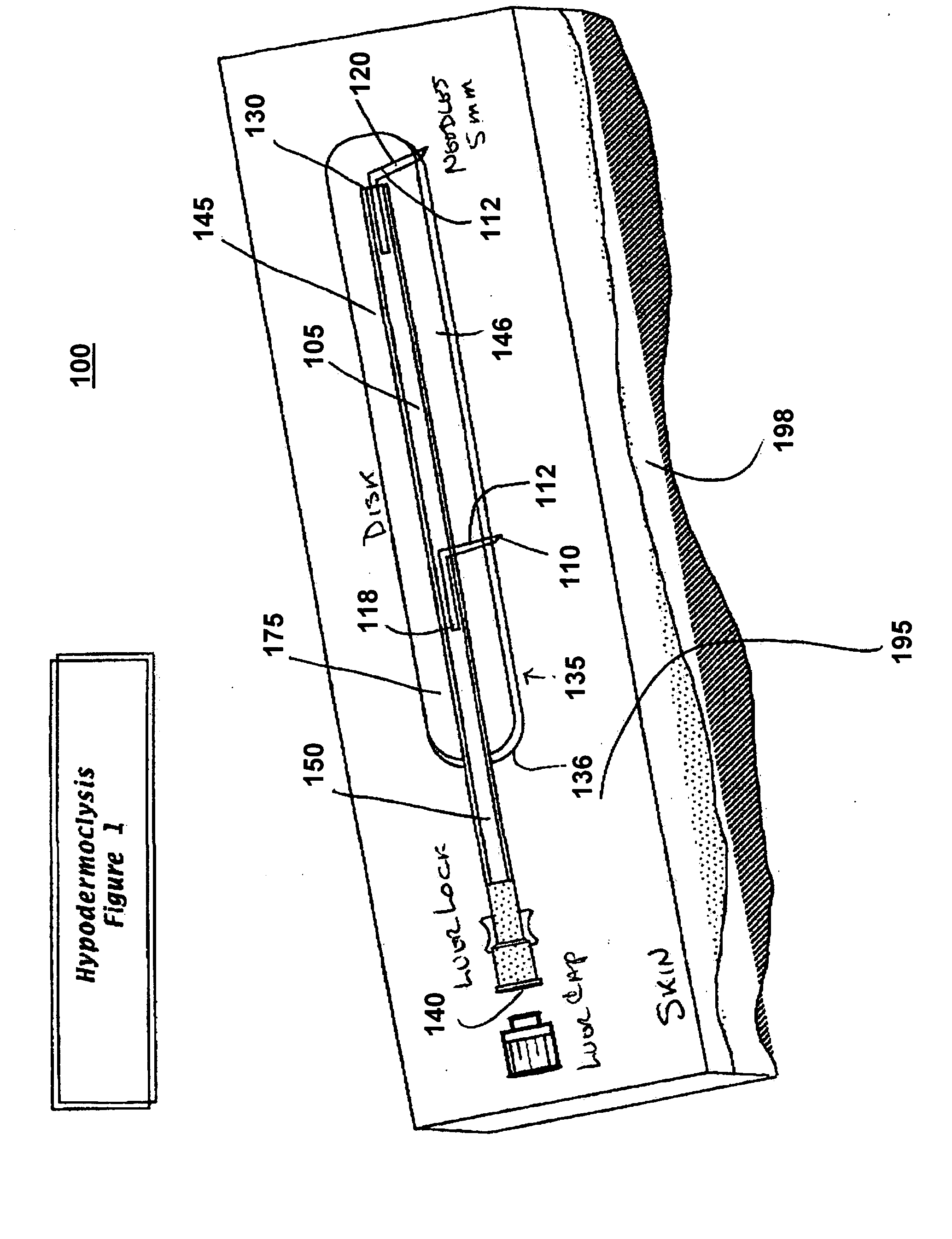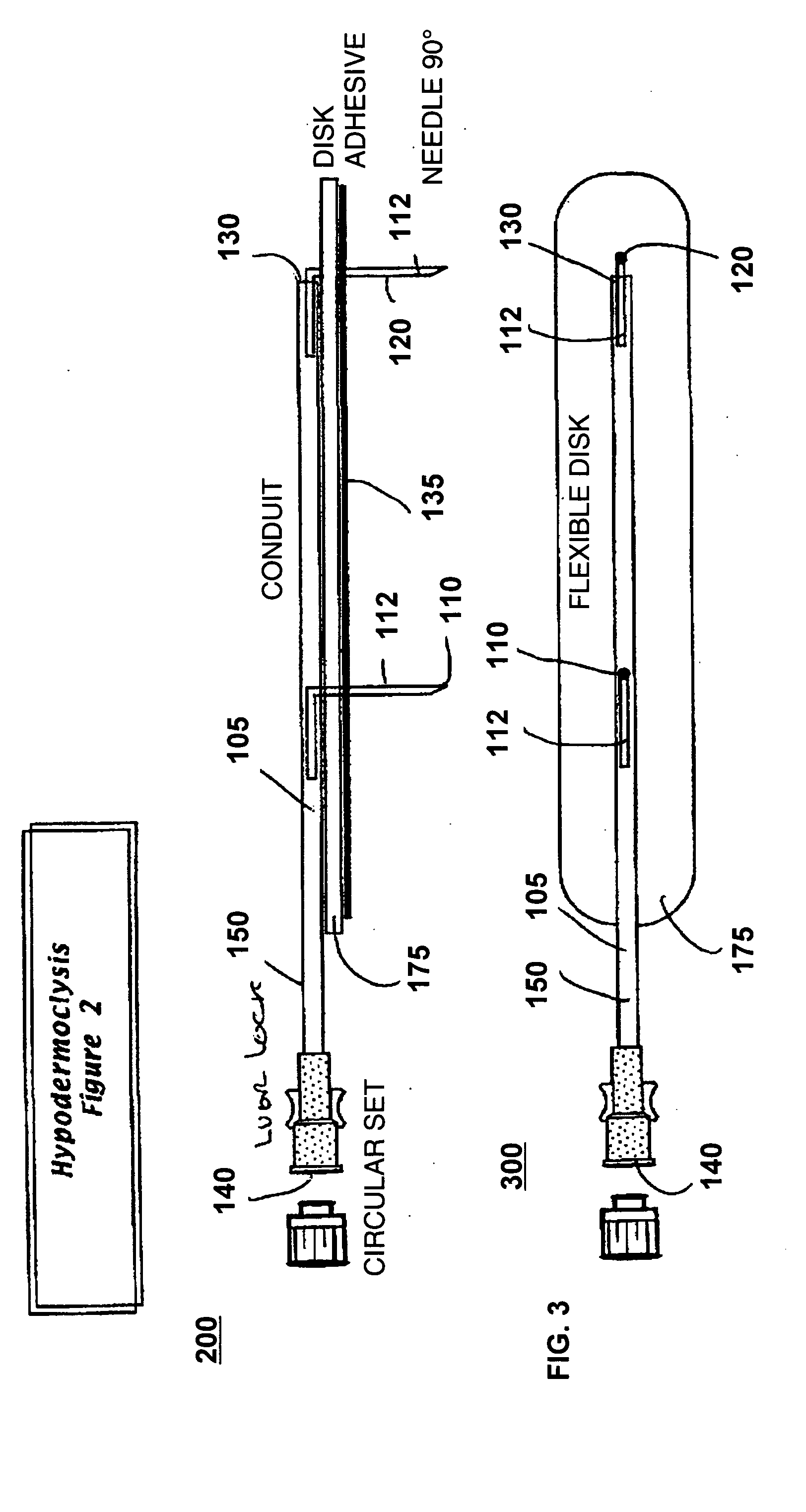Device for subcutaneous infusion of fluids
a technology for subcutaneous infusion and fluids, applied in the field of medical devices, can solve the problems of difficult use of wojcik devices, high cost, and high cost of infusion needles
- Summary
- Abstract
- Description
- Claims
- Application Information
AI Technical Summary
Problems solved by technology
Method used
Image
Examples
Embodiment Construction
[0022]FIG. 1 illustrates a perspective view of a device for subcutaneous infusion of fluids in accordance with one aspect of the present invention. The device 100 includes a delivery tube 150, a support base 175, and a plurality of needles, 110, 120. The delivery tube includes a central lumen 105, a closed first end 130 and an open second end 140. Support base 175 includes an application side 136 and a side opposite 146 the application side.
[0023] Delivery tube 150, in one embodiment, is a cannula. In another embodiment, delivery tube 150 is a catheter. In another embodiment, delivery tube 150 is any biomedically suitable delivery tube configured to deliver fluid to a delivery site. In one embodiment, delivery tube 150 is affixed to an opposite side 146 opposite the application side 136. Lumen 105 is configured for fluidic communication with a fluid source (not shown) through the open first end 140. The delivery tube 150 may be fixedly attached 145 to the opposite side 146, or the ...
PUM
 Login to View More
Login to View More Abstract
Description
Claims
Application Information
 Login to View More
Login to View More - R&D
- Intellectual Property
- Life Sciences
- Materials
- Tech Scout
- Unparalleled Data Quality
- Higher Quality Content
- 60% Fewer Hallucinations
Browse by: Latest US Patents, China's latest patents, Technical Efficacy Thesaurus, Application Domain, Technology Topic, Popular Technical Reports.
© 2025 PatSnap. All rights reserved.Legal|Privacy policy|Modern Slavery Act Transparency Statement|Sitemap|About US| Contact US: help@patsnap.com



